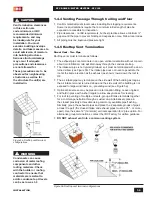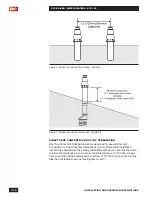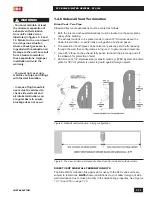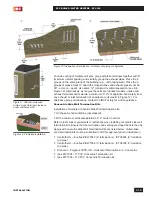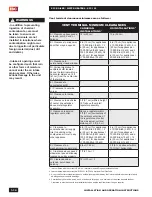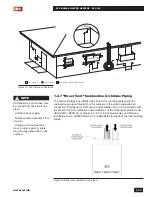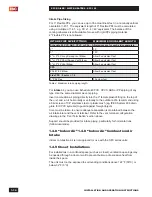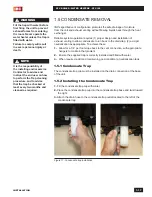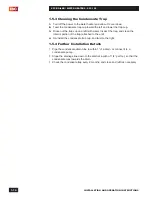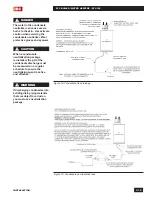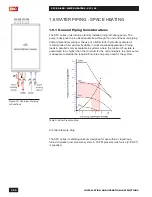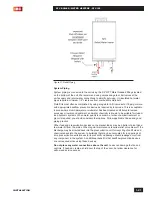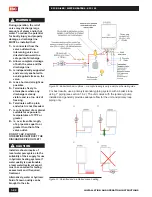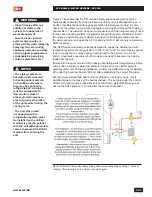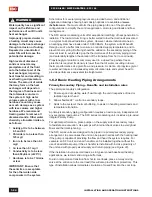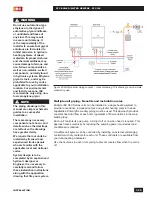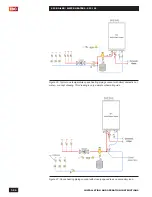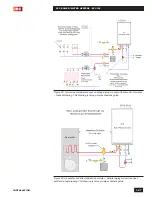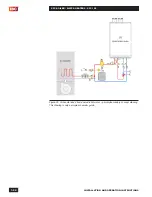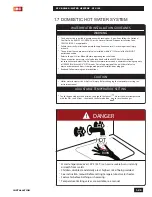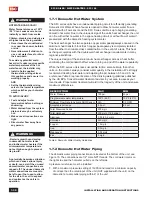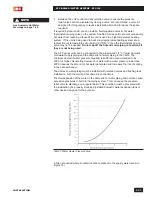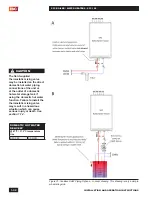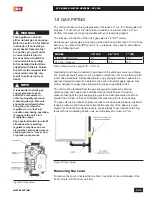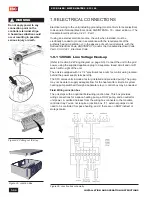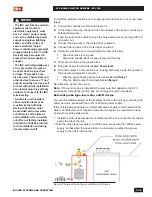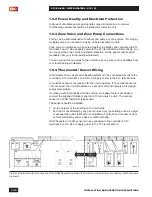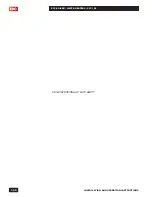
1-23
INSTALLATION
SFC BOILER / WATER HEATERS - SFC 199
WARNINGS
- Close fill valve after any
addition of water to the
system, to reduce risk of
water escapement.
- Ensure the gas ignition
system components are
protected from water (dripping,
spraying, rain, etc.) during
appliance operation and when
servicing (pump replacement,
condensate trap servicing,
control replacement, etc.)
NOTES
- The piping system of a
hot water unit connected
to heating coils located in
air handling units where
they may be exposed to
refrigerated air circulation
must be equipped with
flow control valves or
other automatic means to
prevent gravity circulation
of the unit’s water during the
cooling cycle.
- The unit, when used
in connection with a
refrigeration system, must
be installed so the chilled
medium is piped in parallel
with the unit with appropriate
valves to prevent the chilled
medium from entering the
unit.
Figure 23 illustrates that the SFC series integral space heating pump can be
hydraulically separated from the distribution pump by (A) closely-spaced tees, or
by (B) a low-loss header. Although best practice is primary/secondary, in some
cases (C) the integral pump will be adequate to provide flow through the building
heat emitters. The installer / designer must ensure that if the integral pump is used
for the space-heating emitters it is powerful enough for system distribution. Avoid
(D) where an external pump is placed in series with the integral pump because
the external pump runs when the SFC is serving DHW. It will strongly compromise
DHW response.
The SFC Series modulating units are designed to supply the heating load with
temperatures within the range of 86°F to 194°F (30° to 90°C). Use closely-spaced
tees to connect each pumped space heating load to the primary loop. As an
option, a hydraulic separator or buffer tank can be used to separate the heating
loads from the unit.
Ensure that the pump is rated for the design circulating water temperatures. Some
pumps have a minimum water temperature rating above the low temperature
potential of the unit. Following installation, confirm the performance by measuring
ΔT (under high and low flow conditions) after establishing the correct firing rate
.
We recommend water flow after burner shutdown to use legacy heat – this is
significant due to the mass of the heat exchanger. The pump is under the control
of the unit to allow pump purge after burner shut-down. Default software values
will run the unit’s pump for 1 minute after the burner shuts down.
Figure 24: Basic Primary/Secondary piping with closely-spaced tees concept – concept
drawing. This drawing is only a simple schematic guide.

